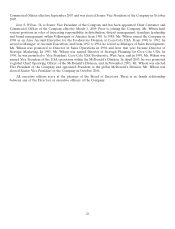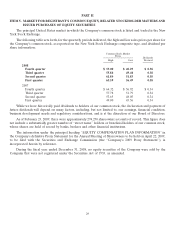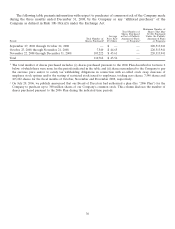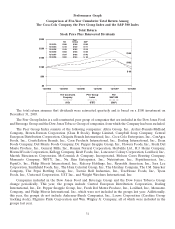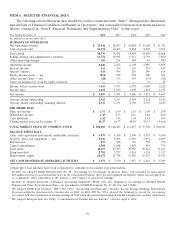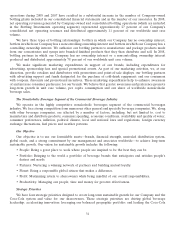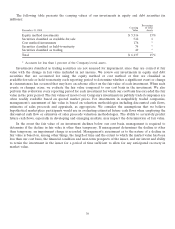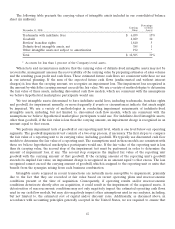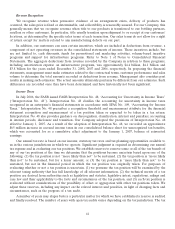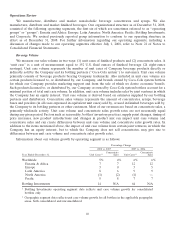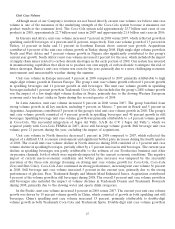Coca Cola 2008 Annual Report Download - page 39
Download and view the complete annual report
Please find page 39 of the 2008 Coca Cola annual report below. You can navigate through the pages in the report by either clicking on the pages listed below, or by using the keyword search tool below to find specific information within the annual report.See also ‘‘Item 1A. Risk Factors’’ in Part I of this report for additional information about risks and
uncertainties facing our Company.
Critical Accounting Policies and Estimates
Our consolidated financial statements are prepared in accordance with accounting principles generally
accepted in the United States, which require management to make estimates, judgments and assumptions that
affect the amounts reported in the consolidated financial statements and accompanying notes. We believe that
our most critical accounting policies and estimates relate to the following:
• Basis of Presentation and Consolidation
• Recoverability of Noncurrent Assets
• Revenue Recognition
• Income Taxes
• Contingencies
Management has discussed the development, selection and disclosure of critical accounting policies and
estimates with the Audit Committee of the Company’s Board of Directors. While our estimates and assumptions
are based on our knowledge of current events and actions we may undertake in the future, actual results may
ultimately differ from these estimates and assumptions. For a discussion of the Company’s significant accounting
policies, refer to Note 1 of Notes to Consolidated Financial Statements.
Basis of Presentation and Consolidation
Our Company consolidates all entities that we control by ownership of a majority voting interest as well as
variable interest entities for which our Company is the primary beneficiary. Our judgment in determining if we
are the primary beneficiary of the variable interest entities includes assessing our Company’s level of
involvement in setting up the entity, determining if the activities of the entity are substantially conducted on
behalf of our Company, determining whether the Company provides more than half of the subordinated
financial support to the entity and determining if we absorb the majority of the entity’s expected losses or
returns.
We use the equity method to account for investments in companies, if our investment provides us with the
ability to exercise significant influence over operating and financial policies of the investee. Our consolidated net
income includes our Company’s proportionate share of the net income or loss of these companies. Our
judgment regarding the level of influence over each equity method investment includes considering key factors
such as our ownership interest, representation on the board of directors, participation in policy-making decisions
and material intercompany transactions.
We account for investments in companies that we do not control or account for under the equity method
either at fair value or under the cost method, as applicable. Investments in equity securities are carried at fair
value, if the fair value of the security is readily determinable as defined by and in accordance with Statement of
Financial Accounting Standards (‘‘SFAS’’) No. 115, ‘‘Accounting for Certain Investments in Debt and Equity
Securities.’’ Equity investments carried at fair value are classified as either trading or available-for-sale
securities. Realized and unrealized gains and losses on trading securities and realized gains and losses on
available-for-sale securities are included in net income. Unrealized gains and losses, net of deferred taxes, on
available-for-sale securities are included in our consolidated balance sheets as a component of accumulated
other comprehensive income (loss) (‘‘AOCI’’). Trading securities are reported as marketable securities in our
consolidated balance sheets. Securities classified as available-for-sale are reported as either marketable
securities or other investments in our consolidated balance sheets, depending on the length of time we intend to
hold the investment. The Company has currently chosen not to elect the fair value option as permitted by SFAS
37



